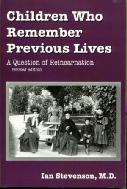Reference: Scientific Studies of Reincarnation by Western Researchers -- Children Who Remember Previous Lives
(Clearwisdom.net) Note: In Eastern culture, the idea of reincarnation is familiar, and it is generally accepted through stories and anecdotes being passed down from generation to generation. In many classic works from Chinese culture such as Journey to the West, the idea of reincarnation is taken for granted and does not need any explanation. In the West, the idea is not as widely accepted culturally, but a number of scientific studies have been performed on the subject and the results published. For the reader's interest and reference only, and not as an endorsement of any particular book, we would like to introduce the results of some of these scholars' research.
Professor Ian Stevenson, M.D., Children Who Remember Previous Lives, McFarland & Company, Inc. Publishers, 2001.
Thanks to the great efforts of many scientists and medical researchers working hard in the last half of the twentieth century, the number of western people who believe in reincarnation has been continuously rising. According to several Gallup polls, at least a quarter of modern western people now believe in reincarnation. Among the scientists doing research on reincarnation, Professor Stevenson is generally acknowledged as an outstanding, leading figure. Since 1961, he has been busy traveling around the world and has collected, sorted and verified more than two thousand cases from different countries.
Dr. Stevenson's book Children Who Remember Previous Lives, gives a comprehensive overview of the historical and current situation with respect to the belief in and study of reincarnation. It describes the characteristics of different types of cases and reveals ways to analyze and explain these cases. The author points out how the idea of reincarnation explains some unsolved problems in psychology and medical science. The book also contains reviews of the author's opinions and research methods. All of the author's theories are demonstrated by the 14 representative cases of children which the author selected from nine different countries.
